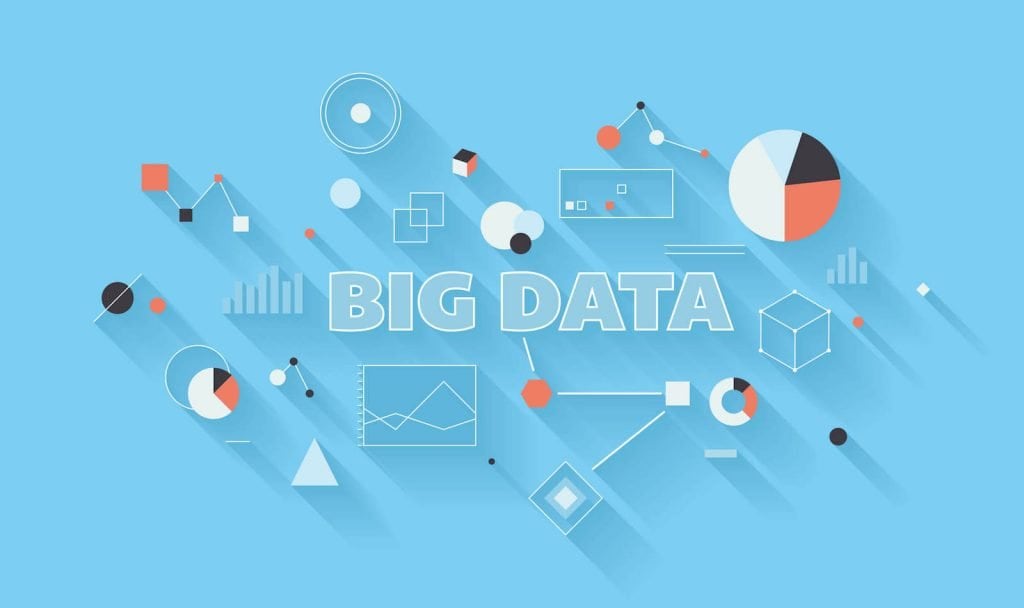What is big data management? Big data consists of huge amounts of information that can not be stored or processed using traditional data storage mechanisms or processing techniques. It generally consists of three different variations.
Table of Contents
ToggleStructured data (as its name suggests) has a well-defined structure and follows a consistent order. This kind of information is designed so that it can be easily accessed and used by a person or computer. Structured data is usually stored in the well-defined rows and columns of a table (such as a spreadsheet) and databases — particularly relational database management systems, or RDBMS.
Semi-structured data exhibits a few of the same properties as structured data, but for the most part, this kind of information has no definite structure and cannot conform to the formal rules of data models such as an RDBMS.
Unstructured data possesses no consistent structure across its various forms and does not obey conventional data models’ formal structural rules. In very few instances, it may have information related to date and time.
Other Characteristics of Big Data Management
In line with classical definitions of the concept, big data is generally associated with three core characteristics:
- Volume: This trait refers to the immense amounts of information generated every second via social media, cell phones, cars, transactions, connected sensors, images, video, and text. In petabytes, terabytes, or even zettabytes, these volumes can only be managed by big data technologies.
- Variety: To the existing landscape of transactional and demographic data such as phone numbers and addresses, information in the form of photographs, audio streams, video, and a host of other formats now contributes to a multiplicity of data types — about 80% of which are completely unstructured.
- Velocity: Information is streaming into data repositories at a prodigious rate, and this characteristic alludes to the speed of data accumulation. It also refers to the speed with which big data can be processed and analyzed to extract the insights and patterns it contains. These days, that speed is often real-time.
Beyond “the Three Vs,” current descriptions of big data management also include two other characteristics, namely:
- Veracity: This is the degree of reliability and truth that big data has to offer in terms of its relevance, cleanliness, and accuracy.
- Value: Since the primary aim of big data gathering and analysis is to discover insights that can inform decision-making and other processes, this characteristic explores the benefit or otherwise that information and analytics can ultimately produce.
The Big Data Management Era
 The origins of large data sets and big data management date back to the 1960s and ’70s, when the first modern data centers emerged, and with the development of the relational database. With the explosion of online data sources during the early 2000s, the search was on for new methods of capturing, storing and managing this potential treasure trove of information.
The origins of large data sets and big data management date back to the 1960s and ’70s, when the first modern data centers emerged, and with the development of the relational database. With the explosion of online data sources during the early 2000s, the search was on for new methods of capturing, storing and managing this potential treasure trove of information.
2005 saw the development of Apache Hadoop, an open-source framework created specifically to store and analyze big data sets. The NoSQL database framework also began to gain popularity around this time, providing a big data alternative to relational database models.
In the years since the emergence of the new breed of open-source big data management frameworks, the volume of big data has increased dramatically. As more objects and devices connect to the internet via the still-growing Internet of Things (IoT), big data repositories are expanding to encompass more information on customer usage patterns and product performance.
Machine learning and artificial intelligence are simultaneously adding to the data sphere and providing tools and techniques to ease big data management and analytics. At the same time, big data cloud technologies provide the scalable infrastructure and processing power needed to navigate the big data landscape.
Big Data Management Architecture
In big data management, data architecture consists of all the IT infrastructure, configuration, tools, and talent required to form-fit a big data system to an organization’s particular needs. It may be pieced together from existing technologies and skills, or more commonly, include a fusion of external inputs with what’s already in place.
Regardless of how it’s put together, one of the core objectives of any big data architecture or big data management effort is data mining.
Big Data Management: Mining Basics
Data mining is the process of examining underlying and potentially useful patterns in large chunks of source data. Also known by names such as knowledge discovery or information harvesting, data mining aims to extract fragments of potentially useful information from the deep recesses of database systems and discover connections between the information streams that weren’t previously discernible.
Big Data Management: Data Mining Techniques
Typically, there are two strands that a data mining effort may follow:
- The creation of predictive power using current information to forecast future values, or
- Finding descriptive power for a better representation of patterns in the present data.
To these ends, a number of different data mining techniques exist.
Classification Analysis
In big data management, basic classification separates the information in a data set into various categories. Classification analysis segments data into assigned categories and then applies pre-established algorithms to mine those segments for particular extractions.
Association Rule Learning
This data mining technique finds an association between two or more events or properties by drilling down to an underlying model in the database system. Association rule learning can then identify small instances of recurring relationships until it identifies a pattern within a large set or subset of data. This technique is commonly used in the retail sector for shopping basket analysis, product clustering, catalog design, and store layout.
Anomaly Analysis
Anomaly analysis detects anomalies or outliers, which are behaviors and relationships that occur outside of predicted or previously observed patterns. This data mining technique is especially useful in fraud detection, health monitoring, and identifying ecosystem disturbances.
Regression Analysis
Regression analysis identifies which variables in a set of relationships are dependent or independent, how those relationships are manifesting, and whether or not either variable is changing. This technique can often apply marketing or product development efforts to the affected variables often used to model and forecast consumer behavior.
Decision Trees
Faced with a number of potentially positive choices in a given situation , decision tree analysis helps in choosing the best options among the good ones.
Prediction
Based on an analysis of previous events, behaviors, or interactions, prediction analysis is a data mining technique that may be applied to forecast likely outcomes for different data types.
Data Analytics Tools
Predictive analytics form a major strand in an ecosystem of data analytics tools that cater to individual and corporate users in numerous industries. At the top end of the current market are tools that offer real-time processing and analysis via streaming and distributed streaming platforms.
For example, Apache Kafka is a Distributed Streaming platform written in Scala and Java, which offers real-time analytics through Publisher, Subscriber, and Consumer deployment models, using an infrastructure similar to a Message Queue or an Enterprise Messaging System.
Data Mining Software
In big data management, Data mining software provides organizations with options to turn raw data into business intelligence that suggests actionable next steps. Generally, data mining software tools perform two main categories of tasks: descriptive or predictive data mining.
Descriptive data mining relates to describing past or current patterns and identifying meaningful information about available data. It’s a reactive process that is mainly focused on accuracy. Descriptive data mining tasks include association, clustering, and summarization.
Predictive data mining generates models that attempt to forecast potential results. By taking a proactive approach, predictive mining may not deliver the most accurate results. Predictive data mining tasks include classification, prediction, and time-series analysis.
Some examples of data mining software include:
RapidMiner Studio
RapidMiner Studio is a visual data science workflow designer that facilitates data preparation and blending, data visualization, and exploration. Its machine learning algorithms power the data mining projects and predictive modeling.
Alteryx Designer
Alteryx Designer is a self-service data science tool that performs integral data mining and data analytics tasks. Its built-in drag-and-drop features enable users to blend and prepare data from various sources and create repeatable workflows.
Sisense for Cloud Data Teams
Sisense for Cloud Data Teams is a data analytics solution that helps users derive actionable insights from big data in the cloud. Users can build cloud data pipelines, perform advanced analytics, and create data visualizations to convey their insights.




